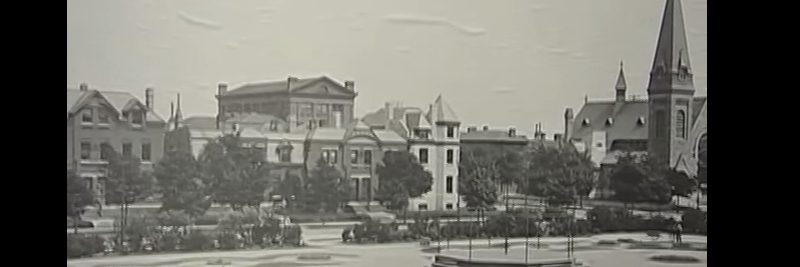George Pullman was born in the early 19th century and was primarily known as an industrialist and an engineer. His story is one of great success, at least at first, with his inventions, but one that quickly turns into a story of tragedy. Pullman was responsible for many public projects throughout his life, but here is a look at what many people remember this industrialist for today.
The Pullman Sleeping Car Made Railroad Travel Comfortable
If you’ve ever ridden in a train in a car that had bunks in it, then you have George Pullman to thank for that experience. His sleeping cars made it possible to enjoy railroad travel in the early days of the railroad industry while still being able to maintain a certain quality of life. The upper berth of the Pullman car would fold down and the two seats that are within the car would pull down to create a fairly comfortable bunk. Curtains provided privacy without a separate room and there were two washrooms, one at the front and the other at the back.
After establishing his company in 1862 to manufacture these train cars, along with buses and trolleys in some instances, Pullman was eventually able to grow his company to an extent that it became an economic force in the State of Illinois. He needed more workers and that meant he needed a way to recruit people to come work for him. That led to the development of a company town.
Pullman Was an Initial Success
George Pullman built his company town, which bore his name, in the 1880s. This allowed families to move into town so that workers could build the cars for him. In the meantime, Pullman still owned many of the properties, which meant the workers were paying his organization rent for their homes, but in return, the workers had the best of available amenities at the time, including indoor plumbing, sewer services, and gas heating.
To live in Pullman, workers had to meet a certain behavioral standard. That worked fine for about a decade until an economic recession took place in 1894. Pullman laid off hundreds of workers and ended up cutting overall wages for those still employed. Despite the cutbacks, however, Pullman didn’t reduce rents for the workers. This caused his employees to go on strike.
What happened next would guarantee that Pullman’s name would go down in history. The strike lasted for two months and at its height, nearly 250,000 workers supported the cause of the Pullman employees. This shut down railroad traffic by nearly 100% in the Western portions of the US. The military was eventually called out to prevent stoppages and this created a number of violent clashes between workers and soldiers. Over 30 strikers were killed in these confrontations.
In the end, the Supreme Court ordered that the Pullman Company pull out of the town and divest the property. The community was incorporated into the city of Chicago and today still exists as an historical district. These actions also contributed to the creation of Labor Day as a holiday to recognize organized labor after the strike as a means of showing solidarity with American workers.
Strong proponent of individual liberty and free speech. My goal is to present information that expands our awareness of crucial issues and exposes the manufactured illusion of freedom that we are sold in America. Question everything because nothing is what it seems.



















